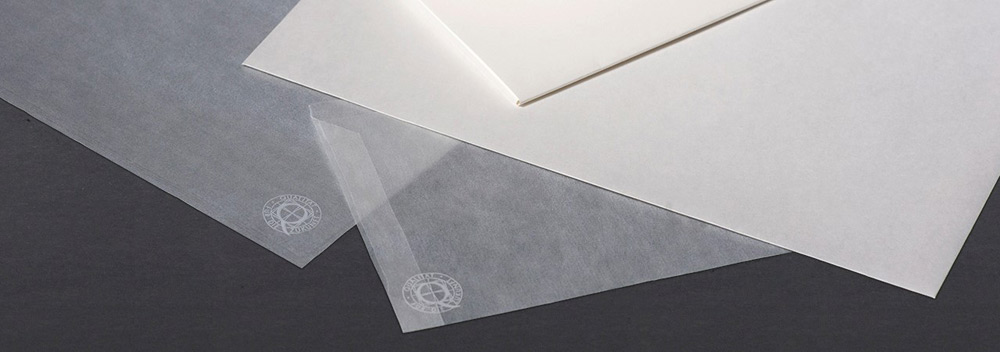Enclosures

Envelopes and enclosures were originally used to transport letters, ensuring privacy and protection from damage. A book and paper merchant from Brighton, K. S. Brewer, is believed to have sold the first letter envelopes as we know them now in 1820. In the course of time such letter envelopes were also used to store small, mostly flat objects in archives, libraries and museums. Today, the use of envelopes and enclosures is very common, including for storage of many cultural artefacts.
Folder enclosures
Folder enclosures are a simple, cost-effective option for short- or long-term storage of flat objects of cultural value such as photographs, letters, graphics, prints, drawings, documents etc. Ageing-resistant folder enclosures are available with or without buffer.» to the product group
Envelopes U-style
U-style envelopes used for archiving were made by cutting off the flap of letter envelopes. A major disadvantage was that the letter envelope material was not ageing-resistant. U-style envelopes for long-term storage are manufactured from ageing-resistant paper or polyester.» to the product group
Envelopes L-style
An L-style envelope makes it easier to insert or remove a flat object from its protective enclosure . Contents are visible from the front and rear of the envelope without necessitating removal.» to the product group
Binder pocket pages
Reinforced binder pocket pages are used for systematic storage of collections of photo negatives and positives, for letters and notes etc. A 4-fold DIN punched edge allows storage in commercially available binders or in clamshell boxes with filing mechanisms suitable for archiving. Reinforced binder pocket pages are manufactured from opaque, ageing-resistant paper or polyester.» to the product group
Four flap folders
Four flap folders are ideal for storage of sensitive flat objects. Handling is minimal: the four flaps are closed after the object is placed on the inner surface of the four flap folder. Four flap folders can be stored upright or lying down in archival boxes.» to the product group
Envelopes for documents
Documents are stored in a folded condition in many archives. They are often kept in (large) envelopes made of brown kraft packing paper. Storage in such envelopes can lead to damage of the documents contained on account of the acidic nature of the brown kraft packing paper. Document envelopes developed by KLUG-CONSERVATION are made of ageing-resistant archival paper or board.» to the product group
Protective seal bags
Seals can be found on historical documents, books or containers. They were used as marks of authentication, identification or ownership, as a proof of closure or an anti-tamper device on documents and containers, often to protect from unauthorised opening or adulteration of contents. We have developed a new type of seal bag in collaboration with the qualified restoration experts Forstmeyer/Schrempf. The material selected and the shape of the bag make it ideal for long-term protection and storage of seals.» to the product group







